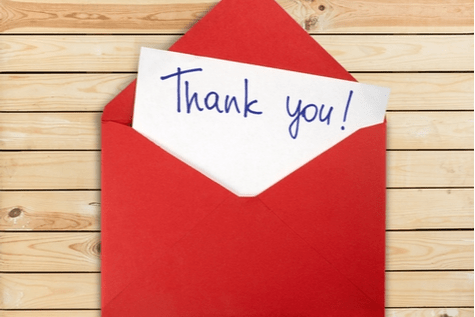At a very young age, my parents taught me two words, THANK YOU. They told me these two words would be very helpful to me as I grew older. I am sure you were also taught those words at a young age! They (my parents) taught me to say thank you after someone gave me something, even if I did not like it or if the food that was given to me was not palatable for my young taste buds. In addition to what I learned at an early age, I learned to say thank you to people for just being nice to me, for helping me or even listening to something that I had to say.
Yesterday, I had a conversation with a chief nursing officer (CNO) colleague who is in the ‘THICK’ of the Covid pandemic. This hospital is experiencing extremely high numbers of Covid-19 patients admitted into their ICUs and other units. Even with the high numbers of patients in their hospital, this CNO and another member of their administration team took cookies to the emergency department of ‘sister’ hospital just to demonstrate to those nurses that they were thought of and to THANK them for their commitment to their patients by continuing to serve them, even when they were exhausted, drained, and pushed to the limit. Then, I heard the following words, “you would have thought we brought them “GOLD NUGGETS”. This CNO went on to describe how these nurses were shedding tears of appreciation because someone remembered them. Someone saw them, consoled them, supported them, but most of all, THANKED them for caring for their patients in such an exemplary way. Wow, two words!! Thank you!
What I just described to you fits with what we already know, and what is demonstrated in the literature. Expressing your appreciation for……. saying thank you just because………. can serve to boost our dopamine, serotonin, oxytocin, and endorphin hormones (Chen, Tsui, & Lam, 2015) which in turn, boosts our emotional health and well-being (Ghosh, 2018). Some leaders know about the impact of appreciation and consistently express gratitude to their teams. If you are leader who is in the ‘THICK’ of the pandemic and you are looking for additional tools to take your “gratitude, appreciation, thank you” to the next level, then, check out some tools developed by the Institute for Healthcare Improvement (IHI) and Quint Studer, why? Because their tools along with the corresponding activities can assist with creating an environment where leaders see, hear, care, and support their teams.
Link to the IHI Conversation Document
Link to the Quint Studer Gratitude Group https://thegratitudegroup.com/
When was the last time you thanked a nurse? A physician, a respiratory therapist, or any member of the healthcare team? If the answer to that question is too long. Then, consider sending a card, an email, making a phone call to a healthcare worker, a nurse, physician, respiratory therapist – someone who continues to risk their life to take care of us: your mom, dad, sister, brother, aunt, uncle, cousin, your child, and your friend. Thank them for sticking it out because it has been a LONG 18 months and counting! We need to know that you our community, values our service to you.
So, to my nurse colleagues, THANK YOU for your presence! Thank you for protecting and advocating for your patients. Thank you for the compassion given to each patient and their families. Thank you for being responsible and accountable to your patients. BUT, most of all, THANK YOU for continuing to have HOPE!
References
- Cheng, S. T., Tsui, P. K., & Lam, J. H. (2015). Improving mental health in health care practitioners: Randomized controlled trial of a gratitude intervention. Journal of Consulting and Clinical Psychology, 83(1), 177. doi: 10.1037/a0037895
- Ghosh, S. K. (2018). Happy hormones at work: Applying the learnings from neuroscience to improve and sustain workplace happiness. NHRD Network Journal, 11(4), 83–92. doi: 10.1177/2631454118806139

